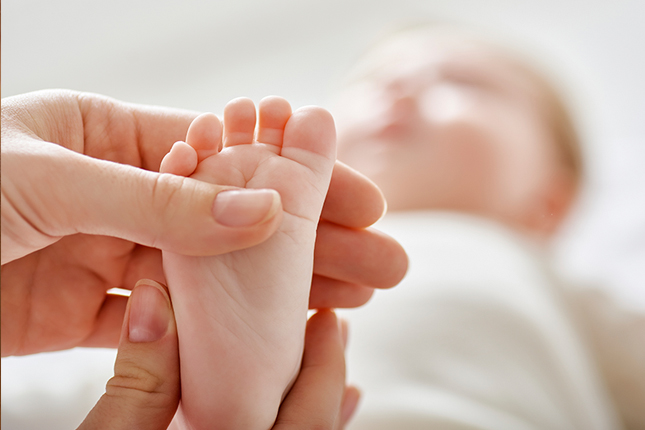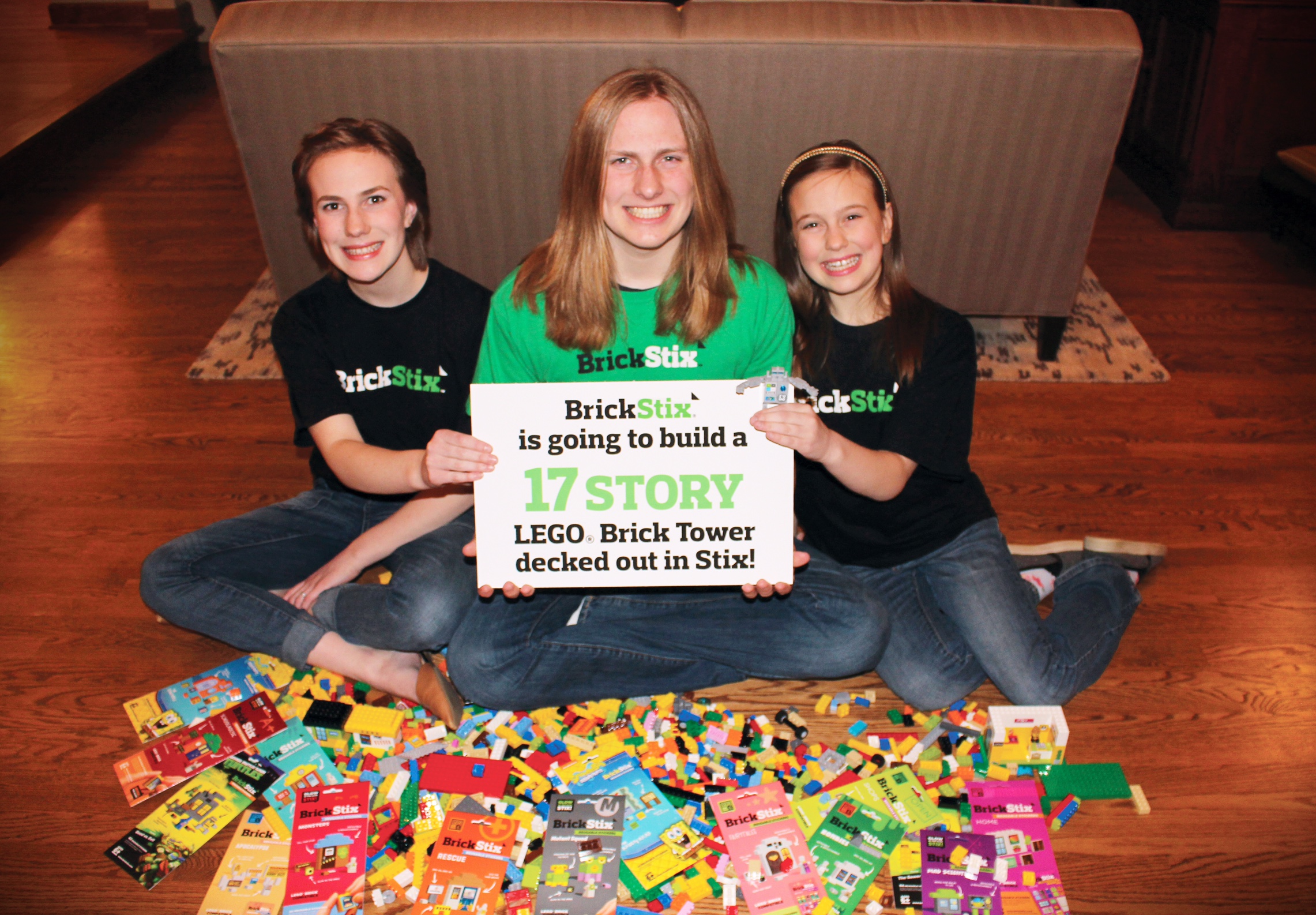Newbies
Know Your Infant Reflexes
[00:00:00]
Please be advised, this transcription was performed from a company independent of New Mommy Media, LLC. As such, translation was required which may alter the accuracy of the transcription.
KRISTEN STRATTON: Your baby has just been born and you laid her down on her back to change her diaper. She throws up her arms beside and her body gets rigid. At the pediatrician’s office, your doctor holds baby upright and it looks like your baby is taking steps. These are just some of the amazing reflexes your newborn has and each serves a purpose. This is Newbies.
[Theme Music/Intro]
KRISTEN STRATTON: Welcome to Newbies. Newbies is your online on the go support group, guiding new mothers through their baby’s first year. I'm your host, Kristen Stratton, Certified Birth Doula, Postpartum Doula and Owner of In Due Season Doula Services. How do you listen to our episode of Newbies?
On our website, through iTunes, via our free aps or perhaps, through our partner website such as Speaker, Stitcher, Tune in, and others, all of our episodes are absolutely free to our listeners. For complete list of all the episodes we’ve released so far, visit the episode guide on our website at www.newmommymedia.com. Here is Sunny with details about how to participate in our show.
SUNNY GAULT: So, we’ve got some segments that I think everyone will be really interested to know more about. It’s a way for you guys to get involved in the show and become part of it. So, one, we’re actually going to do a little later in the show. That is called “Baby Oops". So when you have funny things that happened between you and your babies, so could be kind of you know, little parenting Oops on your end or maybe it’s just something funny that your baby does or I don’t know, combination of the two. We would love to hear the stories. So, if you are interested in submitting for that segment or if you want to know more about the other segments that we have here on Newbies, you can go to our website at www.newmommymedia.com.
If you want to submit, go to the contact link and you can send us an email. You can also send us a voicemail through the website. Just click on that grey banner on the side that says send voicemail. If you want to see the other segments that we have in addition to our Baby "Oops" segment, you can go to the Newbies section of www.newmommymedia.com and you just click on the segments tab from there and you could see all the various things that you can do.
We are always looking for Idea, topics that we can explore newbies too. So if you are thinking that there’s a topic that we haven’t explored yet, it’s still fairly new show, so there’s a bunch of topics I'm sure that are out there.
So if you’re listening and you’re like hey, I have a really good idea again. Go to our website and then send us an email and we’ll have our producers take a look at it and see if it’s something we can explore.
KRISTEN STRATTON: Let’s meet the mammas joining our conversation today. Graeme, tell us about yourself, your family and your experience with today’s topic.
GRAEME SEABROOK: Hi, I'm Graeme and I have two kids. My son is almost three years old. And my daughter Glory is just five months. I don’t remember that much of his newborn time because it feels like it was 50 years ago instead of three years ago probably because of the five month old, but all of her stuff is very fresh in my mind. Yeah, I remember all of that, and I have some questions still. So I'm ready.
KRISTEN STRATTON: Great, well, welcome to our show.
[Theme Music]
SUNNY GAULT: So before we begin our episode today, we’d like to talk about a new campaign to help cure food allergies. And joining us today is the co-founder of End Allergies Together, it’s also known as E.A.T. And Elise Bates is one of two Connecticut moms who joined forces to fund and find the cure for the severe allergies that affect her daughter along with 17million other Americans. So hi Elise, welcome to our show.
ELISE BATES: Thank you so much Sunny for having me.
SUNNY GAULT: Absolutely. So we know, this is personal for you, and your daughter has food allergy, so tell us a little bit about that.
ELISE BATES: Yes, my daughter who is 11 years old now. At three months old, she broke out and hives all over her body. And it was very difficult to manage and to go away as she was in miserable. We took her to an allergist and they said this might be the start of what’s called the food allergy march. And sure enough, we manage her eczema and then at 11 months, we fed her egg and she got sick, and so we knew that she likely had an allergy to egg. And then, at two years old, we tested her and she was also allergic to peanuts, tree nuts and kiwi.
SUNNY GAULT: Wow.
ELISE BATES: So we’ve been alert with foods that we eat since she was an infant.
SUNNY GAULT: Right, right. So you co-founded End Allergies Together, and now, that organization is launching a campaign called, “Do Your 17”. So tell us a little bit about Do Your 17.
ELISE BATES: So Do Your 17 is in honor of the 17million Americans with food allergies, so it’s Do Your 17. And you can do 17 of anything. It’s a nationwide fund raiser. You can do anything you love 17 times or for 17 seconds or for 17 minutes for someone you love who has food allergies. Food allergies are so common now. 1 in 12 children, 2 in every classroom that this was a way that we could engage people across the country to raise money for research to help all of these children eat safely. For your 17, you can sign up and create your fundraising page at www.doyour17.com , and you can do anything. You can run the 17K. You can ski 17 times down the mountain.
My partner and her daughter who has food allergies, they’re doing a mother daughter spinning class where they’re going to spin 17 miles. And her other daughter is trying to do 17 backflips with her friends at her gymnastic studio. My son is going to throw a football 17 yards into a very small bucket, so it’s going to take him a while to figure out how to do that. And my daughter is going to shoot 17 free throws with legendary Celtics number 17, John Havlicek. So there’s all different ways that you can raise money for research and do something you love doing it.
SUNNY GAULT: Yeah, just be creative. There are a lot of really good ideas there. You guys are really creative and in what you chose, I love it.
ELISE BATES: Well it’s fun. You know, kids do not want to be defined whether food allergy is there, so used to being the one who seats if they’re not free table or the one who has to bring their own food to their birthday party or has to you know, not be able to go to friend’s houses when they’re really young because it may not be safe. And so this is the way that people can something they love that they’d rather be defined by, then what they can’t be with every day.
SUNNY GAULT: Okay. And this is going on throughout the month of May, correct?
ELISE BATES: Correct. We’re starting it now but it’s really in celebration of food allergy awareness month in May.
SUNNY GAULT: Okay, and where can they get more information on this Elise?
ELISE BATES: They can go to www.doyour17.com or you can go and build your fundraising page and that will link to our www.endallergiestogether.com website where you can learn more about our organization and why we’re doing this and that we are giving all of the money we raised in this campaign directly to research to help find some real answers on why this food allergy epidemic is happening.
SUNNY GAULT: Yeah, such an important cause and I think it’s so interesting that you found out with your daughter at three months. I mean, this can happen really early. I know there’s a lot that we’re thinking about these brand new parents who just brought their babies home and there’s a lot going on during that first year but when we think about food allergies, it can happen at a really young age. So you can never start too soon and just being very proactive and really recognizing the signs that are there can help your child up tremendously.
ELISE BATES: Absolutely, and being aware of the symptoms is important because they can vary. They can range from tingling in their mouth or as we said eczema or hives or swelling or wheezing. And some of them are hard especially in babies who can’t talk yet.
SUNNY GAULT: Right.
ELISE BATES: So being aware of those, and if there any question, calling the allergist or the pediatrician to find out. It’s really important.
SUNNY GAULT: Well, Elise, thank you so much for doing this. We really do appreciate your organization and all the efforts that your organization is doing especially this “Do Your 17” Campaign and best of luck to you.
ELISE BATES: Thank you so much and thank you for having me.
SUNNY GAULT: Of course.
[Theme Music]
KRISTEN STRATTON: Today on Newbies, we’re discussing the infant reflexes, what purpose they serve and when your baby may not grow them. Our expert today is newborn care educator, DONA certified birth and postpartum Doula Jen Graham. Thanks for joining us Jen and welcome to the show.
JEN GRAHAM: Thank you. I'm glad to be here.
KRISTEN STRATTON: Jen, let’s start with the reflexes baby has right at birth. What is the Moro reflex and what our pediatricians looking for when they test for it?
JEN GRAHAM: The Moro reflexes are better known as the start of reflex. I think that’s what most people would recognize it as ... And the doctors are checking when you go to the newborn exam, they’re going to hold the baby up a little bit and then kind of let the baby down and they’re checking to see whether or not the baby startles and what the means is when the baby is kind of let down, the baby’s arms will open wide up and then the baby’s arms will close up tight again, and then the baby will probably cry. And so, they’re checking to make sure that the baby has the reflex and that it’s symmetrical on both sides of the baby’s body.
If it’s asymmetrical or absent, it could suggest that there is brain damage or spinal cord injury. If it’s asymmetrical, it could suggest that there is possibly a broken shoulder bone or an injury to a group of nerves that runs in the lower back and the upper shoulder area.
KRISTEN STRATTON: So, very important reflex that that’d be present, very important, and I didn’t realize it that was all the things that they were checking for. One of the most endearing reflexes is when baby grasp our finger. Can you explain what is important about that reflex?
JEN GRAHAM: That’s the palmar grasp reflexes. It appears as early as like 16 weeks in utero and it’s usually integrates during the second or third month to life. It’s essential for find motor skills and the ability recognizes and objects by feel, and sensory input. Failure of the palmar grasp reflex to appropriately integrate as the baby gets older, has been witness among children with difficulty, writing and expressing thoughts. So, it should go away within the first few months of life, and if it doesn’t, then that can signal that there’s an issue.
KRISTEN STRATTON: And what is the importance of the other walking reflex? And does this have any significance in regards to one baby will walk?
JEN GRAHAM: Yeah, so the stepping reflex is one of the lesser known reflexes but luckily, we have that with our babies. It usually disappears after about two months, and then babies don’t gain that reflex back again until they’re getting ready to learn to walk. The reasons that happen is that as babies grow heavier. Their leg muscles have not built up enough strength to hold up their bodies. But research shows that if you actually put a baby in water after it’s lost his reflexes will still continue to kick and attempt to walk in water. In that reflex, if you exercise it and continue to try to exercise it, it can actually lead to the baby walking early.
KRISTEN STRATTON: Graeme, do you remember your baby receiving their newborn checkup and the pediatrician checking these reflexes?
GRAEME SEABROOK: I do and I actually had a wonderful pediatrician who walked me through pretty much just the same way that Jen just did. What she was looking for and why she was looking for it, and luckily, Andrew passed everything, and everything was good, but yeah, she really educated me on everything. I didn’t know that if we had put him in water, he still would’ve done the walking reflex. That is really cool.
JEN GRAHAM: Yeah, if they’re buoyant, they will continue to kick their legs and move their legs as if they’re trying to walk in water.
GRAEME SEABROOK: Okay, we took swimming classes with Andrew when he was very, very little and he did. He was kicking pretty much immediately from the very beginning. Is that part of the walking reflex? Was he just doing it … Was he just doing the walking reflex that we thought it was kicking?
JEN GRAHAM: That’s the walking reflex.
GRAEME SEABROOK: That is so cool.
KRISTEN STRATTON: That was the same question I was going to ask Graeme, so I'm really glad you…
GRAEME SEABROOK: Oh, okay.
KRISTEN STRATTON: Great minds think alike. Okay, so Jen, can you explain the several reflexes which are related to baby’s ability to eat and why these are so important for the parents to be aware of?
JEN GRAHAM: Yeah, so the sucking, swallowing, rooting and tongue thrust reflexes are all related to eating. These reflexes are really important obviously because you need to be able to feed your baby. The rooting reflex help the baby find the nipple. If you gently stroke the baby’s cheek or the corner of their mouth to open their mouth and turn toward stimulation and then, as you place your nipple on the baby’s, it’ll touch the roof of their mouth simulation a sucking reflex, and when feeding the sucking reflex draws milk from the breast or the bottle and as milk enters the mouth the swallowing reflex initiates.
The suck-swallow reflexes work together allowing the infant to swallow milk while simultaneously sucking to draw more out. These are obviously the most important reflex as your baby has but just because your baby needs to suck, doesn’t mean that the baby is always hungry, maybe suck to soothe themselves also.
And then the tongue thrust reflexes occurs when something touches the baby’s lips or inside the baby’s mouth, the baby will stick their tongue. In the first four months of life, the tongue thrust reflex protects the infant against choking and then when any unusual substances place on that tongue, it automatically sticks it out or spits it out basically and that reflex goes away between four and six months of age when that baby is getting to going to eat solid foods.
KRISTEN STRATTON: And Graeme, were you aware of your babies getting reflexes and when did you know your baby is ready to eat.
GRAEME SEABROOK: I was aware of the reflexes and I had no idea when he was ready to eat with my first one because I think with your first baby, you’ve really don’t’ know for sure anything. We just read a bunch of books and we were on a ton of websites and we talked to the pediatrician and we were really kind of torn between the whole baby led weaning or doing soft purees and stuff and we just kind of didn’t know what to do and not let us to not do anything for quite a while.
So we didn’t really start him on anything until he was seven month-ish somewhere in there, and then started with avocado, was the first thing, some really, really mushed up avocado which came straight back out and I think that it was actually because of the tongue thrusting a little bit more than anything else.
It was just avocado mixed with some breastmilk. And the second time we tried it, it went right down and he loved it.
KRISTEN STRATTON: I think that was the first food that we use for our kids too is avocado with breastmilk.
JEN GRAHAM: Avocado is a really good first food.
GRAEME SEABROOK: Yes, yeah, with Rory who’s five months now, we haven’t started her yet. I felt like I wanted to wait until she could sit up a little bit better on her own. I don’t know why but that was my kind of gut instinct she was more comfortable doing that, I don’t want to mess with it. She’s fine on the breast milk. She’s cool.
KRISTEN STRATTON: Well, that’s great. Yeah, I did the same thing. I think when I’ve our first, like you said, you read the books but you’re still like I don’t know what to do with this thing. So I think like the early hunger cues are really settle and if you don’t know what their … You don’t know to look for them then usually the first indicator that parents are aware of if either the rooting reflex because you know, you hold your baby near your breast and they’re immediately turning their head or some people just think that babies cry when they’re hungry which now we know that there’s so much more information they gave us way before they ever escalate to crying to let us know that they’re ready to eat.
So I think that rooting reflex is one of the more obvious once and it’s really good one to be a tune too so that you can feed your baby sooner. When we come back, we will continue our discussion about the types of protective reflexes our babies have. We’ll be right back.
[Theme Music]
KRISTEN STRATTON: Welcome back to the show. We are talking with Jen Graham, Newborn Care Educator and Certified Postpartum Doula. Jen, what are some of the reflexes baby has which protect baby?
JEN GRAHAM: The baby has a coughing reflex so that if something is in the airway, the baby will cough so that they won’t choke. They have a sneezing reflex so when the nasal passages are irritated, they will sneeze, they will also will turn their head away from something if they’re unable to breath, so if your baby is nursing and the baby is too squished or something, the baby will move its head away so that it can continue to breathe, and then, there’s also a little reflex that if you were to like lay something like a light blanket on the baby’s face, the baby will actually put their hands up other face to try to move the blanket away so that it can continue to breathe well.
KRISTEN STRATTON: These kids are so smart.
JEN GRAHAM: They are smart babies.
KRISTEN STRATTON: That’s a really important reflexes to have. What reflexes does baby have when placed on his tummy and why is that important?
JEN GRAHAM: When you place your baby on their tummy, they’re going to pull their legs up under their body and kick them out like crawling motion. In fact, when newborn babies are placed on her mother stomach, they’re able to crawl right after birth, when they’re place on the mother’s stomach right after birth, they’re able to crawl up to the mother’s breast and start sucking. The crawling reflex unfortunately disappears after few weeks and then they will no longer be able to do that crawling.
KRISTEN STRATTON: That is the coolest thing. I would love to see that in person someday.
GRAEME SEABROOK: Actually, Rory did that and it was amazing. It was absolutely amazing. She just look like a little froggy.
KRISTEN STRATTON: Okay, so when baby gets a shooter or blood test, they pull their limb away, is this also protective reflexes.
JEN GRAHAM: Yeah, that’s call the withdraw reflex. It’s their normal reaction to paying. It’s actually one of the reflexes that we continue to keep throughout our lives when we feel pain, our natural reaction is to withdraw from it. They have that from birth.
KRISTEN STRATTON: Yeah, I don’t think anyone likes to get poke to a stuff.
JEN GRAHAM: Yeah, probably not, no.
KRISTEN STRATTON: No, and hiccups, parents are frequently concerned their baby is uncomfortable by frequent hiccup and just as really bother baby or is it just bothering us?
JEN GRAHAM: The hiccups don’t really bother babies. In fact, the baby is totally the hiccupping since the second trimester of pregnancy. Hiccup is most often happen after the babies got a full belly and it’s just the spasm of the diaphragm and there’s really no need to worry about it or try to cure them. They just go away in time.
KRISTEN STRATTON: Thank you, thank you. Okay, I would really like to just record that one little sentence that Jen said and send it to my mom because my daughter hiccups constantly and my mom is always like, oh, my poor baby and I'm going, she’s fine. She’s been doing it since she was inside me. I could feel them when I was pregnant with her.
JEN GRAHAM: Right.
KRISTEN STRATTON: So I'm really used to it. She is really used to it, the only one who is bothered by it is my mom.
JEN GRAHAM: Yeah, I mean, because you know, when we have hiccups, we feel uncomfortable but baby just really, their little systems are just not completely develop yet, so they turn to get hiccups a lot, and it doesn’t really affect them at all. I mean, babies would sleep with hiccups, we certainly couldn’t do that but babies can.
KRISTEN STRATTON: Can I give you my mom’s phone number Jen?
JEN GRAHAM: Yes, I'll call your mom.
KRISTEN STRATTON: Thank you. Thank you very much. She’s also postpartum doula for grandmas. We serve the whole family.
JEN GRAHAM: Right.
KRISTEN STRATTON: I appreciate that, okay.
JEN GRAHAM: Mothers are wonderful sometimes.
KRISTEN STRATTON: And what about when babies become more mobile, are there any reflexes which do develop that are also protective?
JEN GRAHAM: Yeah, there are few. The parachute reflex which occurs in slightly older offense is when the child is being held up, right? And the baby’s body is rotated quickly to face forward as if they were falling. The baby will extend their arms forward to break the fall. This reflex actually even appears long before they start to walk but it’s very helpful when they begin walking because as you know, toddlers tend to fall a lot, so they catch themselves.
There’s also the … And it’s very hard for me to pronounce the name of this one but it’s the Labyrinthine thing, righting reflex which is if you hold the infant upright position and then tilt them in some direction, the baby will respond by moving their head in the opposite direction of the body and attempt to maintain that upright posture. So they’re just basically trying themselves balanced, and that’s up to about 12 months.
And then the pull off reflex, if you put your hands on the baby’s hands and you put the baby into upright sitting position and tip either backward or forward while you’re holding your hands. They’ll respond by flexing or extending their arms in an effort to maintain that upright posture because they’re trying to hold themselves up basically.
KRISTEN STRATTON: And Jen, you didn’t mention when some of the reflexes go away but for the most part, all the reflexes that we’d discuss are those out grown by the time baby’s one year old or what’s the average timeframe for most of those reflexes to go away?
JEN GRAHAM: So yeah, babies do outgrow some of the reflexes. To start a reflex, they all grow around 4 to 5 months old, the rooting reflex about 3 to 4 months old, and by that time, they don’t really need to root anymore because they are very capable of finding a breast without having to root for it. That stepping reflex from 3 to 4 months old, the grasp reflex between 6 and 12 months, but all of these reflexes other the ones that they develop as they grow older are usually gone within that first year.
KRISTEN STRATTON: And Graeme, I think we develop faster reflexes when we have children. Do you recall time when you were quick to react more than you had maybe four children?
JEN GRAHAM: Every single day. There’s not like a specific time. I'm super-fast now. I feel like I should have a cape and maybe some like cool arm bonds or something because I really am wonder woman. Now, especially really having a baby and having a toddler at the same time, I am the fastest woman on the planet.
KRISTEN STRATTON: I like to call them my mommy ninja skills because you just somehow becoming dive with the ability to cross the room within a millisecond in order to catch a falling baby.
JEN GRAHAM: Yes.
JEN GRAHAM: You know, [inaudible] in a single bound, that kind of stuff. In fact, even with my youngest because he has special needs. He’s kind of on stepping on his feet at times, and so I still have to be really guarded when I walk behind him like Jen was saying with the fall reflex how they put their arms out in front of them, he doesn’t really do that skillfully and consistently even though he’s almost three, he still struggles with that as like a reflexes and motor skill. So I have to compensate with my mommy ninja skills.
JEN GRAHAM: So you are that reflex for him?
KRISTEN STRATTON: You are, yeah, yeah, absolutely.
JEN GRAHAM: A lot of children who have a neurological problem or who have any kind of disability or were born prematurely don’t necessarily have these reflexes and that’s why our doctors test for them because it also helps them figure out what’s going on with these babies.
KRISTEN STRATTON: Yeah, and it’s so important.
JEN GRAHAM: Very important.
SUNNY GAULT: I actually have a question for Jen. My first born did something and I don’t think it was a reflex. I think it was just how we are talking about earlier how. You know, sometimes, our body just needed you know, chance to kind of adapt in stuff but it was so funny. He would do this thing that I don’t know if it, I can’t remember now if it was I would touch him or … I know some of these were just parodic but like he’d be, okay, and I don’t think it mattered if he was laying down or sitting up but it would like he was sleeping, and then all of the sudden, his arms would come out like major jazz hands, you know, and his eyes would open.
JEN GRAHAM: Yes, that’s are Moro reflex. It’s the start of one where they fling their arms up and really…
SUNNY GAULT: Okay.
JEN GRAHAM: And that goes away after a few months but you know, that’s why it’s really good to swaddle newborn babies when they’re trying to sleep because they startle with like loud noises or a change on the temperature on the room or just because for no reason. So if you wrap their arms when they’re sleeping, then when they startle, they don’t shootout like jazz hands.
SUNNY GAULT: And I thought he was dancing. I mean, really, no but baby jazz hands are pretty.
JEN GRAHAM: Right.
KRISTEN STRATTON: And they’re pretty awesome.
SUNNY GAULT: But and then I never had it with my other kids that I noticed that was not an issue, so is it possible that you know, it can happen with one kid and obviously not other kids, right?
JEN GRAHAM: Some babies do startle more than others. Your other children probably still had the startle reflex that if they were feeling like they were falling or something scared that they would shoot out their jazz hands but some baby are, some babies do startle more than other babies.
KRISTEN STRATTON: You forever change that reflex for me Sunny.
JEN GRAHAM: Now, I'm calling it the jazz hand reflex.
KRISTEN STRATTON: Yeah, I'm just thinking of you know, like I mean the tough head and like something … Again, we actually aim [inaudible] to look with and channeling my bob fuzzy.
JEN GRAHAM: That’s funny.
KRISTEN STRATTON: So I'm going to rename that the bob fuzzy reflex. Oh my goodness. Well, thank you so much Jen and our wonderful parent Graeme. It’s so nice to have you on the show every time. Thanks for joining us today in our discussion about your babies reflexes. And for our Newbies Club members, our conversation will continue after the end of the show as Jen will explain what in app our score is and how these reflexes are evaluated as part of the score. For more information about the Newbies Club, please visit our website at www.newmommymedia.com .
[Theme Music]
SUNNY GAULT: All right, so we before we wrap up our show, we have a “Baby Oops". So this is that segment that I was telling you guys about at the beginning of the show. This one comes from Julie and she posted this on Facebook and I thought it was pretty funny. She says;
“I’ve a “Baby Oops" that was not so funny at the time. When my son was four months old, I was working and my husband was watching my son. My husband brought my son to work. When they left, my husband started the car to get the air conditioning going. So it must have been like the summer or something like that. And then he put my son in his car seat and shut the door.
Therefore, locking my son, she’d on all in the car with no way to get in. He, meaning the husband comes running into to my work and I asked where my son is? He stands at least 10 feet away from me and tells me, he locked him in the car. I almost killed him. Luckily there was a triple A worker there and he was able to break into the car. Needless to say, my husband has never done that again”.
KRISTEN STRATTON: Oh, men.
SUNNY GAULT: It’s so easy to do, I mean, I freak out about this all the time. When I am putting my kids into the car, like do you guys have cars that automatically lock after a certain point?
KRISTEN STRATTON: I do, yeah.
SUNNY GAULT: That freaks me out like I'm always trying to be conscious of where my keys are but you know, when your kids get older, they like to hold your keys, take your keys whatever, and sometimes, you know, I have another baby on my hand or something like that and I'm trying to like get everyone in the car. And my worst fear is that those automatic locks are going to happen and I'm not going to have a door open or something like that.
KRISTEN STRATTON: Yeah.
SUNNY GAULT: Thank goodness now, I at least have my five year old. He’s about to turn six this summer. He knows, he knows better now and he can probably unlock and do whatever but I still totally freaks me out.
JEN GRAHAM: Yeah, my three year old loves locking the door, like she loves it. She thinks it’s the most fun thing ever. I locked my newborn in the car once. I had to call the fire department…
SUNNY GAULT: Oh Jen, oh no.
JEN GRAHAM: This was 15 years ago and I did it at the preschool. I was dropping my son off and I got my son on the car and I close his door and I went to go around to get the baby out of the car sit. I had put my keys on the seat to get my son out of the car seat. And when I will close his door, it locked and yeah, so and it was in Texas in summer and it’s very hot, so I had to call the fire department to come and get my baby out my car.
SUNNY GAULT: I know Jen but you’re just freaking out. I would be freaking out.
JEN GRAHAM: Yeah, I was little upset.
SUNNY GAULT: Oh my goodness.
JEN GRAHAM: But I only did it once.
SUNNY GAULT: Yeah, that’s the good news, right? Once it happens once, you really, really on guard with those stuff. Obviously, accidents happen.
KRISTEN STRATTON: Good parents make mistakes too, you know.
SUNNY GAULT: Yeah.
JEN GRAHAM: I loved that he stood 10 feet away from her when he was telling her what happen, because that’s a smart guy.
SUNNY GAULT: Smart guy. He was out of punching range. All right, well, Julie, thanks so much for sending this is in. if anyone is listening, well hopefully you’re listening. Let me back up, if you are listening and you have a “Baby Oops" you would like us to read on the show, you could tell it’s early in the morning when we’re recording this. Please, please, please, send us an email through the website again and you can also send us a voicemail through our website, that is www.newmommymedia.com and we’d be happy to share it on our show.
KRISTEN STRATTON: That wraps up our show for today. We appreciate you listening to Newbies.
Don’t forget to check out our sister show:
• Preggie Pals for expecting parents
• Parent Savers for moms and dads with infants and toddlers
• The Boob Group for moms who breastfeed and
• Twin Talks for parents with multiples.
Thanks for listening to Newbies. Your go to source for new moms and new babies.
[Disclaimer]
This has been a New Mommy Media production. The information and material contained in this episode are presented for educational purposes only. Statements and opinions expressed in this episode are not necessarily those of New Mommy Media and should not be considered facts. While such information and materials are believed to be accurate, it is not intended to replace or substitute for professional, medical advice or care and should not be used for diagnosing or treating health care problem or disease or prescribing any medications. If you have questions or concerns regarding your physical or mental health or the health of your baby, please seek assistance from a qualified health care provider.
SUNNY GAULT: How would you like to have your own show on the New Mommy Media Network? We are expanding our line-up and looking for great content. If you are a business, or organization interested in learning more about our co-branded podcast, visit our website at www.NewMommyMedia.com.
[00:33:04]
[End of Audio]











